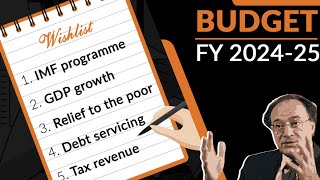The US Agriculture Department's attache in Bangkok released the following report, dated April 7, on the sugar outlook for Thailand. Attache reports are not official USDA data.
Report Highlights: My 2005 cane production will likely continue to decline slightly due to unattractive returns, as the Royal Thai Government (RTG) is restricting the price supports. As a result, exportable supplies of sugar will likely be limited. The RTG is beginning to focus more on cane-based ethanol, but the policy remains under development.
Executive Summary: MY 2005 sugarcane production will likely take a downward turn in anticipation of unattractive returns, and due to RTG policy to limit cane production.
MY 2004 cane production is revised downward to 66 million metric tons, due to dry weather conditions, which led to a sharp reduction in sugar production. However, sugar yields improved significantly due to a smaller proportion of burned cane. Also, despite an anticipated lower exportable supply, sugar exports are forecast to increase further from the previous year's anticipated record level, as other major world cane producers are hit by drought.
The change in RTG policy on sugarcane support is pushed by the huge debt burden of the state-run Cane and Sugar Fund. RTG support continues, but is limited to 65 million tons of cane produced.
Meanwhile, the government has liberalised the ethanol industry in order to support the use of cane for ethanol production. This policy is new and not fully formed, with aspects of its implementation yet to be determined.
PRODUCTION: MY 2005 sugarcane production will likely continue the recent downward trend, due mainly to anticipated unattractive returns, as the RTG has begun limiting the price support program, paying support only for the first 65.0 million tons of cane production.
Moreover, the subsidy price is set at no higher than 580 baht/ton (ex-factory price) between MY 2004-2008.
The current subsidy price for MY 2004 is tentatively at 478 baht/ton, far below production cost, due mainly to depressed global prices, which are a key factor in determining the RTG subsidy price.
In MY 2004, sugarcane production is revised downward to 66 million metric tons, down significantly from the record 74.1 million metric tons of the previous year, due to drought.
The North-eastern region, covering about 40 percent of total production, was adversely affected by drought.
Average cane yield is expected to decline sharply from the previous year's average of 64.8 tons/hectare.
However, the proportion of burned cane reportedly contracted to 38 percent of total harvested cane, as compared to 52 percent in the previous year. Thai farmers often burn the sugarcane fields prior to harvest, which makes the cane easier to gather during harvesting.
CONSUMPTION: All sugarcane is currently used as the raw material in sugar mills. The RTG is starting to encourage the use of cane for ethanol production, but this new policy is still under development.
At present, the average extraction rate of cane for sugar is reportedly at 107.3 kgs/ton of cane, up significantly from 98.36 kgs/ton of cane in the previous year. Also, the average Cane Commercial Sugar (CCS) increased to 12.0 percent, compared to 11.2 percent in the previous year.
The improvement in average extraction rate and average CCS reflected the reduction in proportion of burnt cane and improvements in the cane handling system from the fields to the mills.
The government is attempting to limit the financial assistance to cane growers. Depressed world prices have been driving up the amount of financial assistance the RTG must pay.
The five-year plan, to start in MY 2004, will provide financial assistance via the subsidy price, which is set at no more than 580 baht/ton (ex-factory price), only on the first 65 million metric tons of cane production. Any production after this amount receives no subsidy payment.
BR100
7,977
Increased By
398.8 (5.26%)
BR30
25,602
Increased By
1383.8 (5.71%)
KSE100
76,208
Increased By
3410.7 (4.69%)
KSE30
24,438
Increased By
1225 (5.28%)




















Comments
Comments are closed.